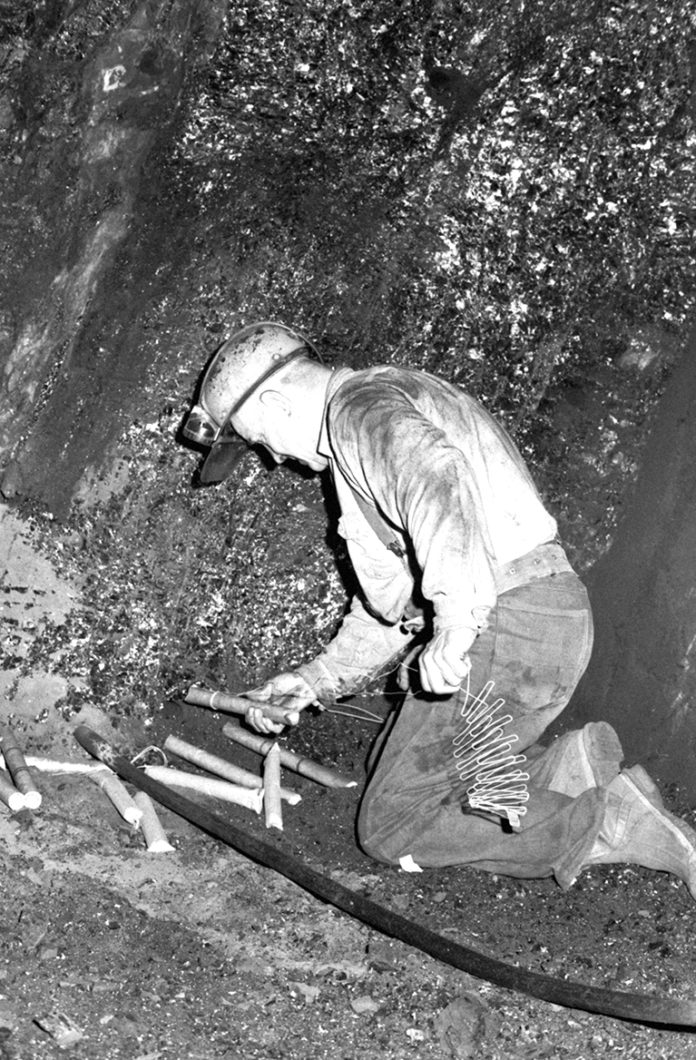Deep underground in the Rogers No. 3 mine, John Streepy loads sticks of dynamite into a drill hole. The Rogers coal seam measured 16-feet across and was tilted nearly vertical due to geologic forces that uplifted the Cascade Mountains, creating this rare condition in Ravensdale. For coal miners working 800 feet below the earth surface, the entire seam of coal was above then. The local mining method was called ‘booming’ and started with tunnels driven beneath the coal to be mined. The tunnels, called gangways, counters, and crosscuts were advanced eight feet at a time by blasting the coal. In this photo, Streepy inserts a primer stick of dynamite into the 2” diameter hole to be followed by several more sticks. The black plastic pipe near his left knee pushed the dynamite fully into the hole. Then dummy bags filled with clay, seen next to the plastic pipe were used as stemming plugs to contain the explosive force.
In his left hand, John Streepy holds two wires connected to the electric blasting cap which created the primer. Blasting caps were numbered (#0, #1, and so on) with a timed delay between the caps. The millisecond delay allowed the initial blast in the center of the wall of coal to create a void into which charges fired. This system is regularly used when tunneling. Because of the high risks associated with explosives in a confined space, an elaborate safety protocol was developed before the dynamite shot was detonated. Prior to the shot, “Fire! Fire! Fire!” was loudly shouted alerting nearby miners of the impending explosion. This photo from April 1974 comes courtesy of Barry Kombol who worked underground at the time.







